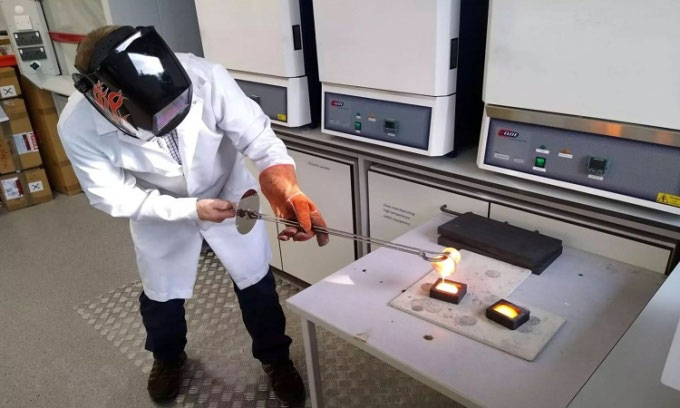Through changes in composition, a group of researchers has developed a type of bioactive glass that is exceptionally effective in killing pathogenic bacteria.
Currently, antibacterial materials such as bioactive glass have many applications, including in medical implants, hospital surfaces, and wound treatment. Scientists from Aston University in the UK report that they have enhanced the antibacterial efficacy of this glass by 100 times.

A member of the research team creating a sample of bioactive glass. (Photo: Aston University)
Typically, bioactive glass integrates nanoparticles of a specific antibacterial metal oxide. Therefore, we might assume that using two oxides would double the effectiveness. However, the research team, led by Professor Richard Martin, found that depending on how the two metal oxides are combined, the final bioactive glass can be significantly more effective than glass made with just one type of oxide.
Martin and his colleagues created samples of bioactive glass containing zinc, copper, or cobalt, along with samples that combined two metal oxides in different ways. Each sample was ground into a powder, sterilized, and then introduced to populations of the bacteria Escherichia coli and Staphylococcus aureus, as well as the pathogenic fungus Candida albicans.
After 24 hours, the glass combining copper with zinc or cobalt killed E. coli bacteria 100 times better than glass containing only one type of oxide. The glass combining copper with zinc also showed similar effectiveness in eliminating S. aureus. On the other hand, glass made with zinc and cobalt was the most effective against fungi.
“We are very excited to conduct experiments and discover that this infection-preventing product is significantly more effective, which could help reduce the number of antibiotics used. We are confident that combining antibacterial metal oxides will have many potential applications,” Martin stated. He and his colleagues described their findings in the journal ACS Biomaterials Science & Engineering.

















































